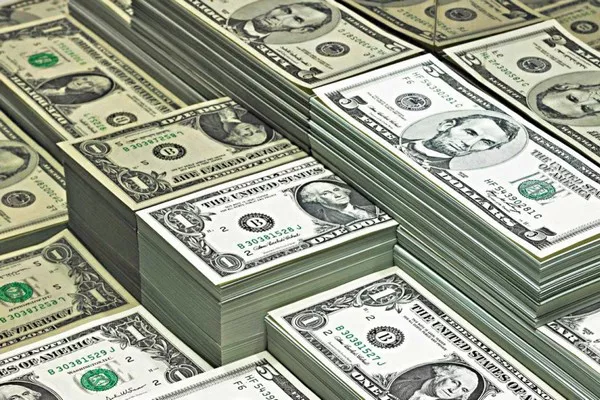In the world of numismatics, the value of old currency notes is often a subject of great fascination. Among the numerous banknotes that have captured the attention of collectors, the 1776 $2 bill stands out as a significant piece of American history. This article will explore the history, rarity, and the factors that determine the worth of a 1776 $2 bill, shedding light on its value in the contemporary collector’s market.
The Historical Significance
The year 1776 holds a special place in the hearts of Americans, as it marks the birth of the United States of America. During this pivotal year, the Continental Congress adopted the Declaration of Independence, a document that declared the American colonies’ intention to break free from British rule. The issuance of the 1776 $2 bill was a part of this revolutionary spirit.
These bills were produced by several different states, including New Jersey, Delaware, and Maryland. They featured unique designs and were a testament to the financial challenges faced by the Continental Congress. They served as a form of currency during the early days of the American Revolution, and their historical significance is one of the primary factors contributing to their value.
The Rarity of 1776 $2 Bills
While the historical importance of the 1776 $2 bill is undeniable, its rarity is another key factor that makes it a prized collectible. These notes were produced in limited quantities, and their survival over the centuries is a testament to their scarcity. Many factors contribute to their rarity:
Circulation and Wear: The vast majority of 1776 $2 bills were used in daily transactions during a tumultuous period in American history. As a result, many of these bills suffered from wear and tear, reducing their numbers in pristine condition.
The Passage of Time: The bills were printed on relatively fragile paper, and the passage of time has taken a toll on their overall condition. Over the centuries, many of these bills have deteriorated or been lost entirely.
Destruction and Redemption: As the United States established a more stable monetary system after the American Revolution, these bills were gradually removed from circulation. Many were destroyed or exchanged for newer currency, further reducing their availability.
Regional Variations: The 1776 $2 bills were issued by individual states, each with its own unique design. Some states produced more of these notes than others, leading to variations in their rarity depending on the issuing state.
Determining the Value
The value of a 1776 $2 bill can vary significantly based on several factors. Collectors and numismatic experts consider the following elements when assessing the worth of these historic banknotes:
Condition: The condition of the bill is one of the most critical factors in determining its value. A well-preserved, uncirculated bill in excellent condition is far more valuable than a heavily worn or damaged one. Collectors use a grading scale, ranging from “poor” to “gem uncirculated,” to assess the condition of banknotes.
Rarity: As mentioned earlier, the issuing state and the number of surviving bills from that state play a significant role in determining rarity. Bills from states with fewer surviving examples are generally more valuable.
Historical Significance: Certain 1776 $2 bills may possess additional historical significance, such as being signed by prominent individuals of the time, or bearing unique markings related to specific events during the American Revolution.
Demand: Market demand fluctuates over time, influencing the value of collectibles. The value of a 1776 $2 bill may rise and fall based on the current interest and demand among collectors.
Authenticity: As with any collectible, ensuring the authenticity of a 1776 $2 bill is crucial. Counterfeits and reproductions do exist, so collectors should seek expert opinion or certification from reputable grading services to verify authenticity.
Real-Life Examples
To illustrate the variability in the value of 1776 $2 bills, let’s consider a few real-life examples:
A well-preserved, uncirculated Delaware 1776 $2 bill in gem uncirculated condition may fetch several thousand dollars at auction, reflecting its rarity and excellent state of preservation.
A heavily circulated and damaged Maryland 1776 $2 bill may be worth a few hundred dollars, primarily due to its historical significance rather than its condition.
A New Jersey 1776 $2 bill signed by a prominent historical figure, such as George Washington, would be considered exceptionally valuable and could potentially fetch tens of thousands or even more at auction.
Conclusion
The 1776 $2 bill is not just a piece of currency; it is a tangible connection to the birth of a nation. Its historical significance, rarity, and condition all contribute to its value in the world of numismatics. Collectors and enthusiasts are drawn to these bills not only for their monetary worth but also for the fascinating stories they tell about America’s early days. The value of a 1776 $2 bill can vary greatly, and it is a testament to the dynamic nature of the collector’s market. If you’re lucky enough to come across one, it’s a treasure worth preserving and appreciating for generations to come.


